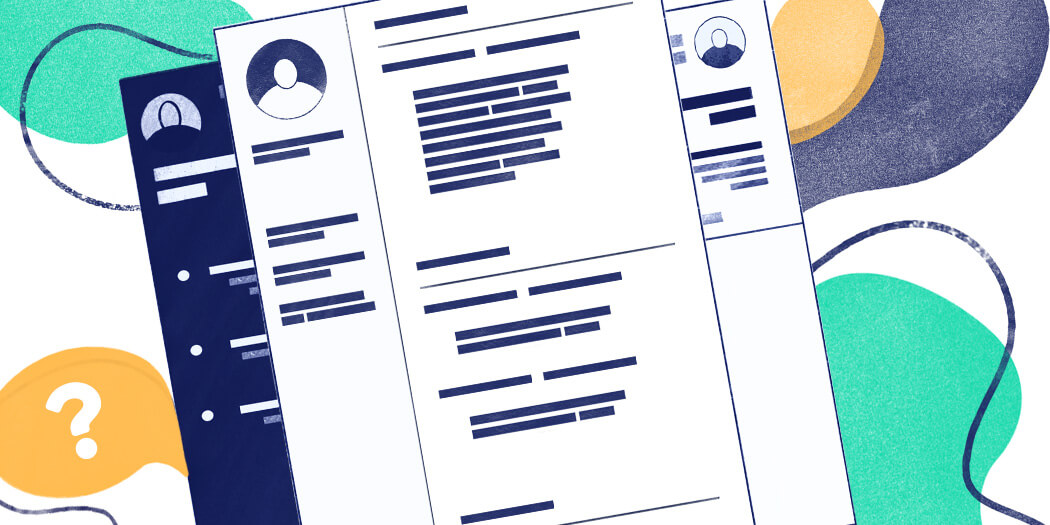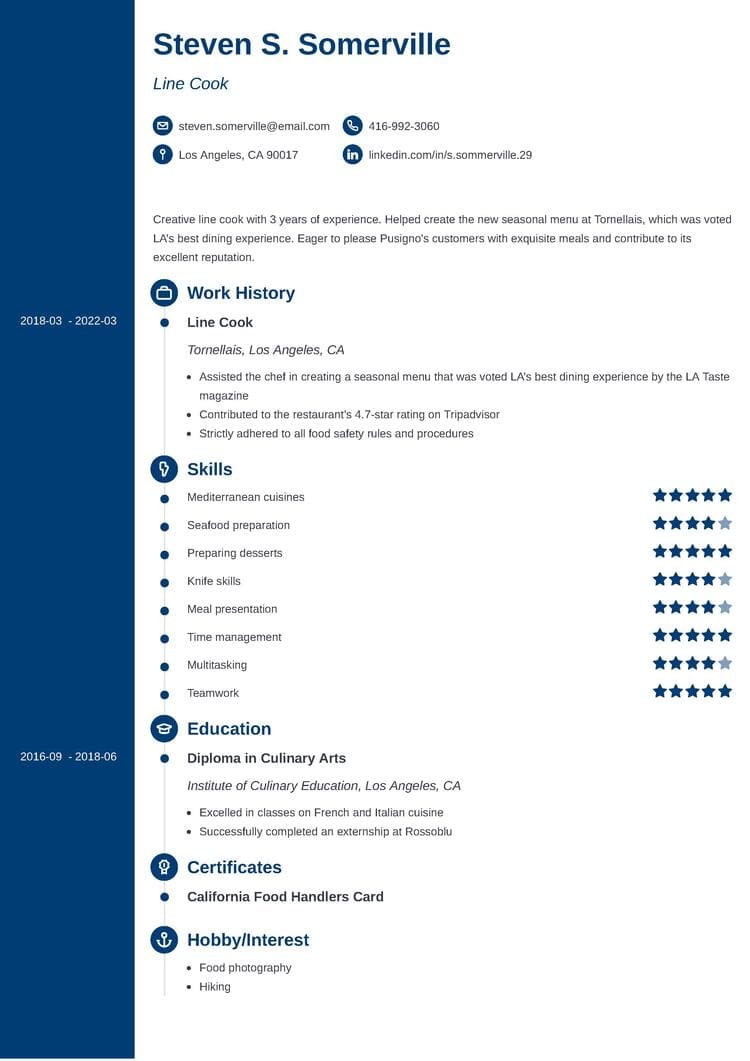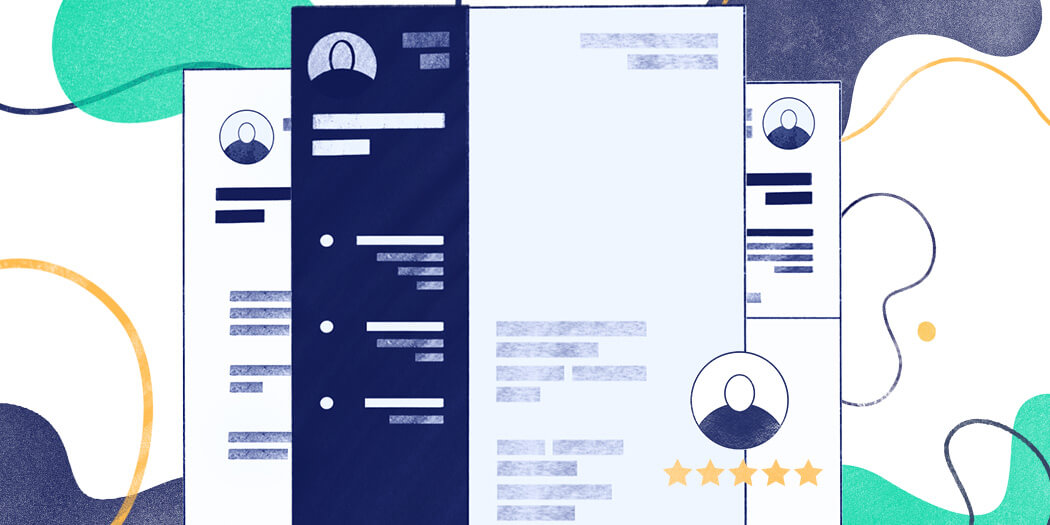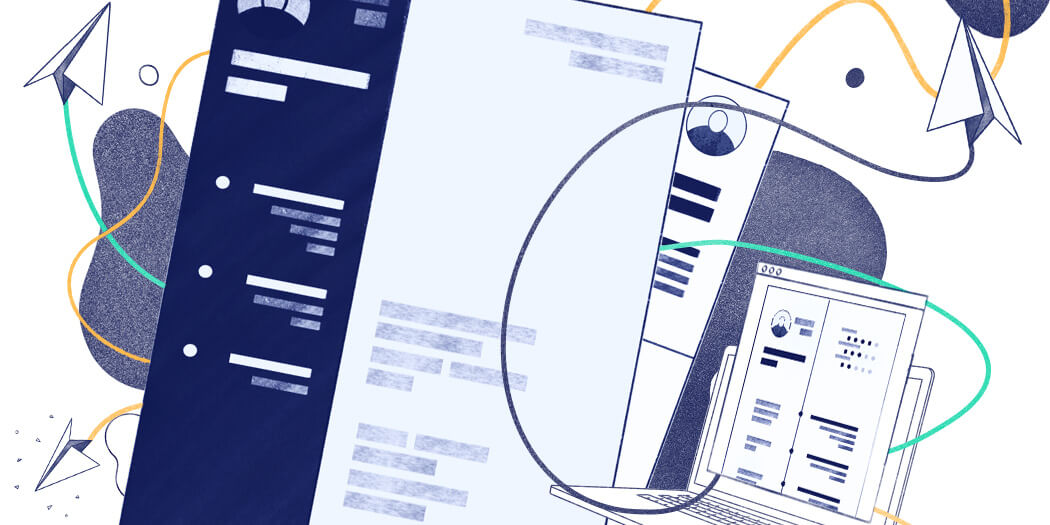
Find the Best Resume Format for You in 2026
To help you choose the best resume format, let’s first understand the differences between the three main resume formats. See the examples and make an informed choice.

Mariusz Wawrzyniak
Career Expert
You’ve probably heard the words “CV” and “resume” more than a few times in your life. Sometimes they’re used to mean the same thing, sometimes not. What’s the deal, then? Which one should you write?
This guide will show you all you need to know about the CV vs resume difference.
Here’s what you’re about to learn:
Save hours of work and get a job-winning resume like this. Try our resume builder with 20+ resume templates and create your resume now.

What users say about ResumeLab:
I had an interview yesterday and the first thing they said on the phone was: “Wow! I love your resume.”
Patrick
I love the variety of templates. Good job guys, keep up the good work!
Dylan
My previous resume was really weak and I used to spend hours adjusting it in Word. Now, I can introduce any changes within minutes. Absolutely wonderful!
George
If you are here just for a quick summary, here's the CV vs resume difference:
In CVs (curriculum vitae), you list your professional and educational backgrounds in a longer and more detailed manner. It's typically used when applying for academic or research positions. Meanwhile, a resume summarizes your professional and educational experience for the purpose of applying for a job.
Typically, a resume is one to two pages long and highlights your relevant skills and work experiences for a particular job or role. If you're still unsure what's the difference between a CV and a resume, see the full overview below.
Here's the definition of a CV: CV is short for curriculum vitae, a Latin phrase that means “the course of [your] life”.
In the United States and Canada, the word CV refers to a long, in-depth document that provides a full picture of a person’s professional and academic achievements. You need to write a CV when applying for grad school, looking for a senior academic position, applying for a scholarship, and so on. If you're applying for a job in Canada, use the Canadian resume format instead of a CV.
There’s no page limit for CVs. Researchers who are just starting out usually have CVs that are 2–3 pages long, while senior academics can easily boast 10-page-long CVs. If you're interested in how to tackle writing a CV, check out the linked guide.
Here’s an example of a CV that you can use. To give it that professional look, use one of our CV templates or head straight to the CV builder.
Ella B. Hall
CURRICULUM VITAE
2022/01/25
Ella B. Hall
Lecturer on Applied Linguistics
The State University of New York, Albany, NY
295 Johnson Rd., Corona, NY 11368
551-251-4884
ella.hall@eeemail.com
linkedin.com/in/ellahall.ph.d
EDUCATION
2021 Ph.D. in Applied Linguistics
University of Chicago, Chicago, IL
The Department of Modern Languages
Thesis Title: “A Mixed Methods Analysis of Corpus Data from Reddit Discussions of the COVID-19 Pandemic”
Thesis Supervisor: Kenneth M. Hildebrand
2016 M.A. in Applied Linguistics, Graduated Summa Magna Cum Laude
The City University of New York, NYC, NY
The Department of Modern Languages
Thesis Title: “Using Corpus Methods to Investigate Classroom Interaction”
Thesis Supervisor: James Nutini
PROFESSIONAL APPOINTMENTS
Lecturer on Applied Linguistics
The State University of New York, Albany, NY
Department of Modern Languages
2021–Present
Developed 2 undergraduate courses and supervised 3 M. A. theses.
PUBLICATIONS
Books
The Language of the Pandemic. New York: Hill and Wang, 2022.
Book Chapters
"Sociolinguistic approaches to Reddit discussions" In New Challenges of 21st Century Linguistics, edited by Stephen Regan. Houndmills, Basingstoke, Hampshire, and London: Macmillan Press Ltd., 2022.
"EFL student discourse: a corpus-driven perspective" In Inside the Classroom, edited by Michael Tomaszewski. London and New York: Faber & Faber, 2020.
Selected Peer-Reviewed Journal Articles
“Conundrum: A Story About Reading,” New England Review 38, no. 1 (2015): 212–230, Project MUSE.
“A Pig That Was in the Icebox,” Verso Magazine 8, no. 4 (2013): 91–109.
AWARDS AND HONORS
2018, PROSE Award for Single Volume Reference in the Humanities and Social Sciences, Honourable Mention
2020, Fulbright / The City University of New York Award in Humanities
CONFERENCES
2022, The Limits of an Institution, International Conference, Universidad Complutense, Madrid, Spain; Paper title: "The Limits of Sociolinguistics."
TEACHING EXPERIENCE
Teaching Assistant
University of Chicago, Chicago, IL
2018–2022
LANGUAGES
French: Advanced
German: Intermediate
Arabic: Can Read With a Dictionary
Wondering how to make your academic career look just as impressive? Check out our in-depth guide to writing an academic CV.
In North American usage, a resume is a short, usually one-page document you write when applying for most jobs. It’s closely tailored to a specific job opening and presents a selection of your most relevant achievements and best skills.
A perfect resume length is typically one page, unlike the academic CVs that become longer as your academic career progresses. Although, very experienced professionals can opt for two pages.
What should you include on your resume when applying for a job? A standard American work resume has the following resume sections:
Make sure to align your resume closely with the job ad you’re responding to. Find out how to target your resume with absolute precision so that it fits the specific job opening like a glove.
Here’s a typical resume sample for the American job market:
Steven S. Somerville
Line Cook
Los Angeles, CA 90017
416-992-3060
steven.somerville@eeeemail.com
linkedin.com/in/steve.sommerville.2947
Summary
Creative line cook with 3 years of experience. Helped create the new seasonal menu at Tornellais, which was voted LA’s best dining experience. Eager to please Pusigno’s customers with exquisite meals and contribute to its excellent reputation.
Work Experience
Line Cook
Tornellais, Los Angeles, CA
March 2018–March 2022
Education
Diploma in Culinary Arts
Institute of Culinary Education, Los Angeles, CA
Graduated in 2018
Skills
Certifications
Interests
Use our full guide to writing a resume to write one that’s just as good. Pick a resume template to make sure your resume layout follows all best practices, or head straight to our resume builder that will take care of design and formatting your resume.
The ResumeLab builder is more than looks. Get specific content to boost your chances of getting the job. Add job descriptions, bullet points, and skills. Easy. Improve your resume in our resume builder now.

Nail it all with a splash of color, choose a clean font, and highlight your skills in just a few clicks. You're the perfect candidate, and we'll prove it. Use our resume builder now.
The difference between a CV and a resume is pretty clear in American usage. Though if you’re applying for an international job, you’re probably wondering why they want to see your CV rather than your resume.
In Australia and South Africa, the words CV and resume are synonymous and used interchangeably.
But, in the UK, Ireland, other European countries, and New Zealand, a CV is equivalent to an American resume. It’s a short document used to apply for regular, non-academic jobs.
Expert Hint: Depending on where you want to work, you’ll have to write a resume, a CV, or… a biodata. This is a document that’s popular in South Asia. It’s similar to a resume, but it includes a lot of personal information: date of birth, gender, religion, race, ethnicity, nationality, marital status, and current salary.
So does it mean you write a European CV just like an American resume, then?
Yes and no. While a European CV is very similar to an American resume, some country-specific differences exist.
For instance, British CVs are usually written in the first person, “I boosted sales by 30%...”
In the US and Canada, it’s more common to write, “Boosted sales by 30%...”
Another thing is the use of photographs on CVs. In some countries, such as Germany, Poland, or Portugal, employers might still expect your headshot on a CV. But in the UK or the US, a picture on a resume or CV will actually hamper your chances of landing the job.
Last but not least: Europeans typically use the A4 paper format, whereas Americans and Canadians traditionally prefer Letter-size documents. The difference between the two formats isn’t dramatic, but it can still mess with your resume (or CV) layout.
Whatever you’re writing, our resume & CV builder can do it all.
Double your impact with a matching resume and cover letter combo. Use our cover letter generator and make your application documents pop out.

Want to try a different look? There's 21 more. A single click will give your document a total makeover. Pick a cover letter template here.
Here are the most important items to remember regarding the CV vs. resume difference:
Is the difference between a resume and a CV still unclear? Unsure which one to pick? Drop me a line in the comments, and I’ll do my best to straighten out your queries!
At ResumeLab, quality is at the crux of our values, supporting our commitment to delivering top-notch career resources. The editorial team of career experts carefully reviews every article in accordance with editorial guidelines, ensuring the high quality and reliability of our content. We actively conduct original research, shedding light on the job market's intricacies and earning recognition from numerous influential news outlets. Our dedication to delivering expert career advice attracts millions of readers to our blog each year.

To help you choose the best resume format, let’s first understand the differences between the three main resume formats. See the examples and make an informed choice.

Mariusz Wawrzyniak
Career Expert

A resume job description is a resume section where you list your professional experience, usually in reverse-chronological order. It means you start with your most recent position and proceed backwards. Each entry should contain 3-6 bullet points. It is recommended to include 10-15 years of work history on your resume.

Michael Tomaszewski, CPRW
Certified Professional Resume Writer, Career Expert

Learn how to email a resume the right way and start getting more job offers. See a proven resume email sample and learn how to write one yourself.

Michael Tomaszewski, CPRW
Certified Professional Resume Writer, Career Expert